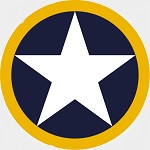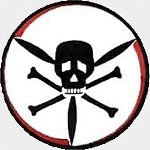Air Force 1 AF10157 USAAF Consolidated B-24D Liberator Heavy Bomber - "Wongo Wongo," 512th Bombardment Squadron, 376th Bombardment Group, 9th Air Force, 1943 (1:72 Scale)
"Why should we have a navy at all? There are no enemies for it to fight except apparently the Army Air Force."
- General Carl Spaatz, Commander of the US 8th Army Air Force, after WWII
 Life for the B-24 heavy bomber began in 1939, when the Army Air Corps initiated a request for a new bomber designed to exceed the performance of the B-17. Consolidated Aircraft responded quickly with its proposal, labeled Consolidated Model 32 and, on March 30th, 1939, was awarded the contract. One day short of nine months later, on December 29, 1939, the first flight of the XB-24 bomber prototype took place.
Life for the B-24 heavy bomber began in 1939, when the Army Air Corps initiated a request for a new bomber designed to exceed the performance of the B-17. Consolidated Aircraft responded quickly with its proposal, labeled Consolidated Model 32 and, on March 30th, 1939, was awarded the contract. One day short of nine months later, on December 29, 1939, the first flight of the XB-24 bomber prototype took place.
Slightly smaller than the B-17, the turbosupercharger-equipped B-24 flew farther with a bigger bomb load than the much more publicized Boeing aircraft. Of seven service-test YB-24s, six were sent to the Royal Air Force (RAF) under the export designation LB-30A. Because they lacked turbosuperchargers and self-sealing fuel tanks, the RAF found them unsuitable for combat duty over Europe. Instead, they were stripped of their armament and put into service as transports on the Trans-Atlantic Return Ferry Service, which had been established to send air crews to Montreal to take delivery of American aircraft consigned to the British war effort.
Flying for the Army Air Corps as the B-24, and the U.S. Navy as the PB4Y-1, the plane also saw service in the Royal Air Force where it was known simply as the Liberator. There was also a transport version known as the C-87, one of which was Winston Churchill's personal aircraft, carrying him to historic meetings at Moscow and Casablanca, among other locations.
This particular 1:72 scale replica of a B-24D Liberator heavy bomber, nicknamed "Wongo Wongo", was attached to the 512th Bombardment Squadron, 376th Bombardment Group,, 9th Air Force, during 1943.
Sold Out!
Dimensions:
Wingspan: 18-1/4-inches
Length: 11-1/4-inches
Release Date: September 2018
 Historical Account: "Wongo Wongo" - On August 1th, 1943, the Allies launched Operation Tidal Wave - a strategic bombing mission over Nazi-occupied territory. A total of 176 B-24 Liberators set out to attack oil refineries at Ploesti, Romania, with an impressive 167 (or 94%) of them hitting their target! Unfortunately, however, 54 of these aircraft were lost over Ploesti, and another three at sea. One devastating loss included a B-24D nicknamed "Wongo Wongo," which lost control and crashed into the Mediterranean on its way to the oil refineries, killing all 10 crewmen - brave members of the 512th Bomb Squadron. In recognition of the airmen's valiant efforts, a number of decorations were awarded including five Medals of Honor and a Presidential Unit Citation to all five USAAF bomb groups involved: 44th, 93rd, and 389th from the 8th Air Force; and 98th and 376th from the 9th Air Force.
Historical Account: "Wongo Wongo" - On August 1th, 1943, the Allies launched Operation Tidal Wave - a strategic bombing mission over Nazi-occupied territory. A total of 176 B-24 Liberators set out to attack oil refineries at Ploesti, Romania, with an impressive 167 (or 94%) of them hitting their target! Unfortunately, however, 54 of these aircraft were lost over Ploesti, and another three at sea. One devastating loss included a B-24D nicknamed "Wongo Wongo," which lost control and crashed into the Mediterranean on its way to the oil refineries, killing all 10 crewmen - brave members of the 512th Bomb Squadron. In recognition of the airmen's valiant efforts, a number of decorations were awarded including five Medals of Honor and a Presidential Unit Citation to all five USAAF bomb groups involved: 44th, 93rd, and 389th from the 8th Air Force; and 98th and 376th from the 9th Air Force.





 Wongo - WOW
Wongo - WOW 


